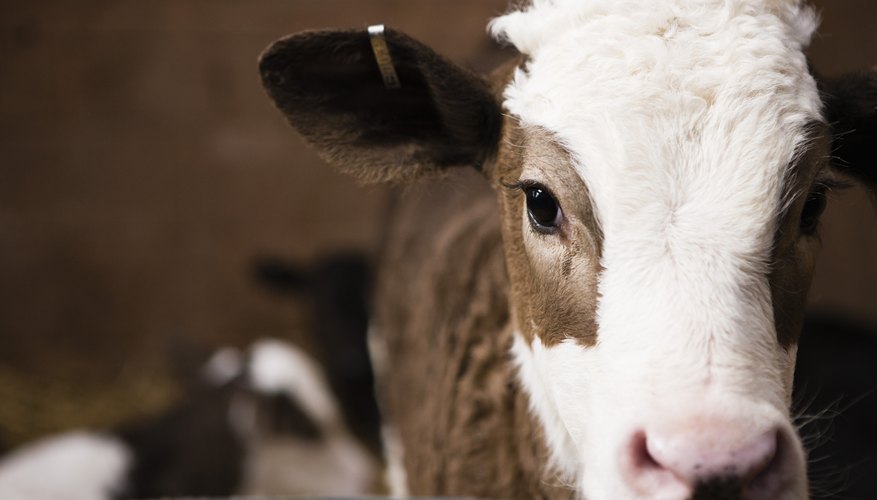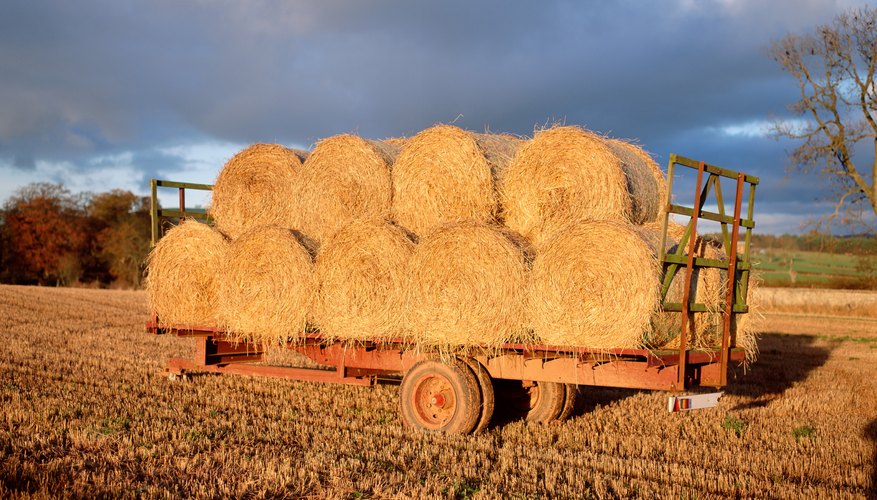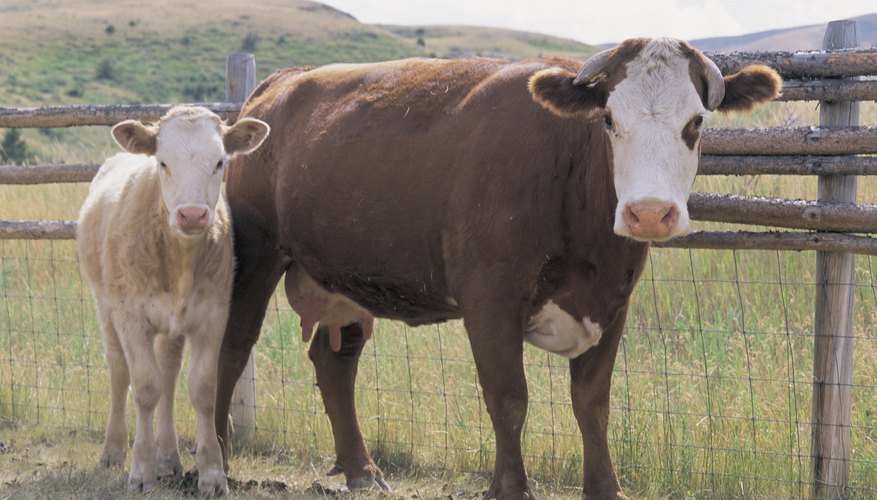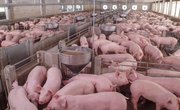
Items you will need
Pasture
Fencing supplies
Hay
Hay ring
Grain (optional)
Water source
Beef cattle can be raised by any farmer with access to pasture. The beef market can be volatile, so price margins can fluctuate significantly when sending cattle to the market, but raising beef can still be an attractive venture because of the low labor requirements. Profits can also be increased by finding consumers to sell sides of beef to directly. Some farmers buy calves to finish out, while others keep breeding stock.

Jupiterimages/BananaStock/Getty Images
Build a fence around all available pasture. The more pasture the cattle can graze on, the less input costs -- such as hay and grain -- will be required. A single strand of electric wire works better at containing the cattle than barbed wire.

Jupiterimages/BananaStock/Getty Images
Place a hay ring in the pasture. The hay ring reduces loss from round bales as the cattle consume them. Make sure the ring is near the gate so the tractor doesn't have to drive far to place the bale in it. Also make sure there is a water source for the cattle. Livestock water fountains work the best because they supply continual water to the animals. A stream or creek can be sufficient, as long as they don't go dry during hot weather.

Jupiterimages/BananaStock/Getty Images
Purchase starter stock. Young animals are the best because they are cheaper. The first year you can choose to use all of the stock for breeding, or slaughter a portion as well. This will depend on the desired size of the herd, how long you want to reach that size and perhaps the beef farm gate price when the animals have reached slaughtering weight.
Check the beef farm gate price weekly by viewing the information published by local markets. You may decide it is most economical to send in a few steers or heifers if the price is exceptionally high, even if they have not reached their full weight. Consider slaughtering the portion of the herd not kept as breeding stock during the fall when the grass runs short, since it may not be profitable to keep them through the winter and feed them grain.
"Finish out" any cattle meant to be slaughtered by feeding them grain about 100 days before butchering, if it is economical to do so. The grain will significantly expedite weight gain, but will also increase costs. To determine if it is economical to finish out a beef animal calculate the total cost of feed given to it during this time and compare it to the expected weight gain and market price. Some farmers choose to only feed the cattle pasture as a way of keeping costs down.

Jupiterimages/BananaStock/Getty Images
Feed hay, and grain if desired, to all cattle kept through the winter. Provide shelter if wintering in areas of harsh climate.
Breed all dams about 60 days after they calve in order to have a calving interval of one year. They can be bred with bulls on your farm or by artificial insemination if you don't want the danger of handling bulls.
References
Writer Bio
Clayton Yuetter has worked as a professional writer since 1999. His writing has appeared in many journals and websites such as The Milk House, The Country Folks, Progressive Dairyman and Three Times Daily. He received a Master of Arts in writing at the National University of Ireland, Galway.


